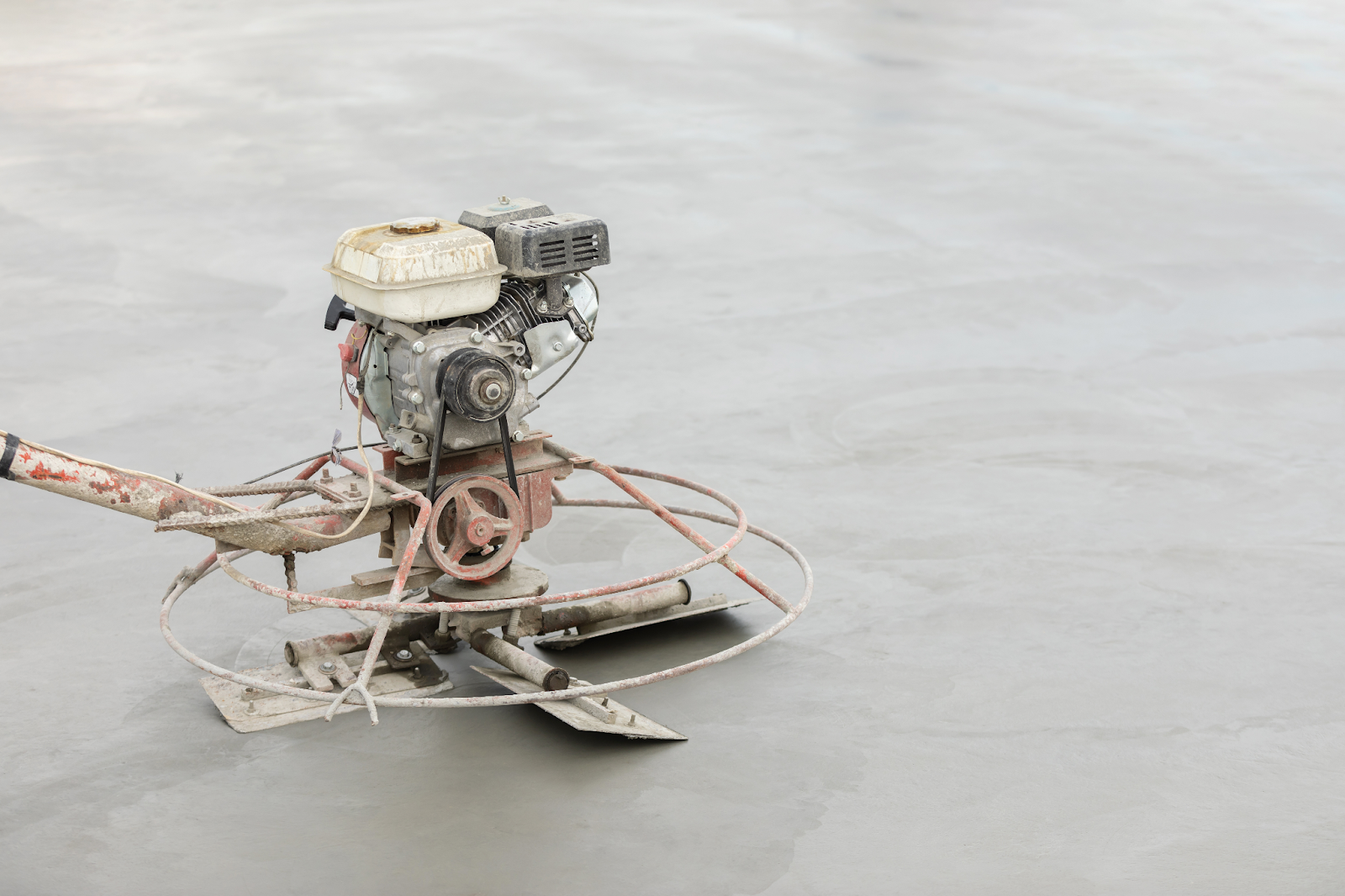Types of Concrete Finish
When it comes to decorative concrete, some concrete finishes are better suited for certain products. We want you to get the best results possible! That’s why we recommend specific products based on which concrete finish texture your surface has.
From smooth concrete to rough concrete, we’ll explain relevant decorative concrete finishes for Direct Colors’ colorants and sealers.
Machine Troweled/Smooth Concrete
Smooth concrete is achieved either manually by hand or by machine trowel. Hand trowels allow you to move a blade across the surface, smoothing as you go. A trowel machine contains blades that smooth a concrete slab.
Smooth finish concrete has a less porous, tight surface. This means there are hardly any pores (tiny holes) in the concrete.
Lightly Textured Concrete
Lightly textured concrete is typically created using hand trowels, bull floats, or other tools. This slight texture can also be produced by "screeding" or dragging a board across the concrete forms to smooth and level the wet concrete surface.
Stamped Concrete
Using a concrete stamp, patterns or designs are pressed into fresh concrete to apply a stamped finish. These patterns look like stone, brick, or wood. Concrete patios, driveways, and walkways are common outdoor areas that feature stamped concrete.
Concrete Pavers
These paving stones come in a wide variety of sizes, shapes, and finishes. They tend to have relatively rough surfaces that prevent slipping. Brick pavers are a classic example of pavers used in outdoor spaces.
Patio pavers and driveway pavers are durable, low maintenance, and known for handling weight without cracking.
Broomed Concrete
Also known as “brushed concrete” in some regions, broom finished concrete obviously gets its name from the tool used to create it. A broom is dragged over fresh concrete, with the bristles creating small, textured grooves. Broom finish is quite popular, especially for concrete pool decks, as the grooves offer more traction.
Rough Concrete
To the touch, a rough concrete texture is as rough as stone. Rough concrete is also quite porous, meaning that it has many tiny holes or spaces within.
Due to its high porosity, a rough texture surface may require more concrete colorant in order to develop your intended result.







